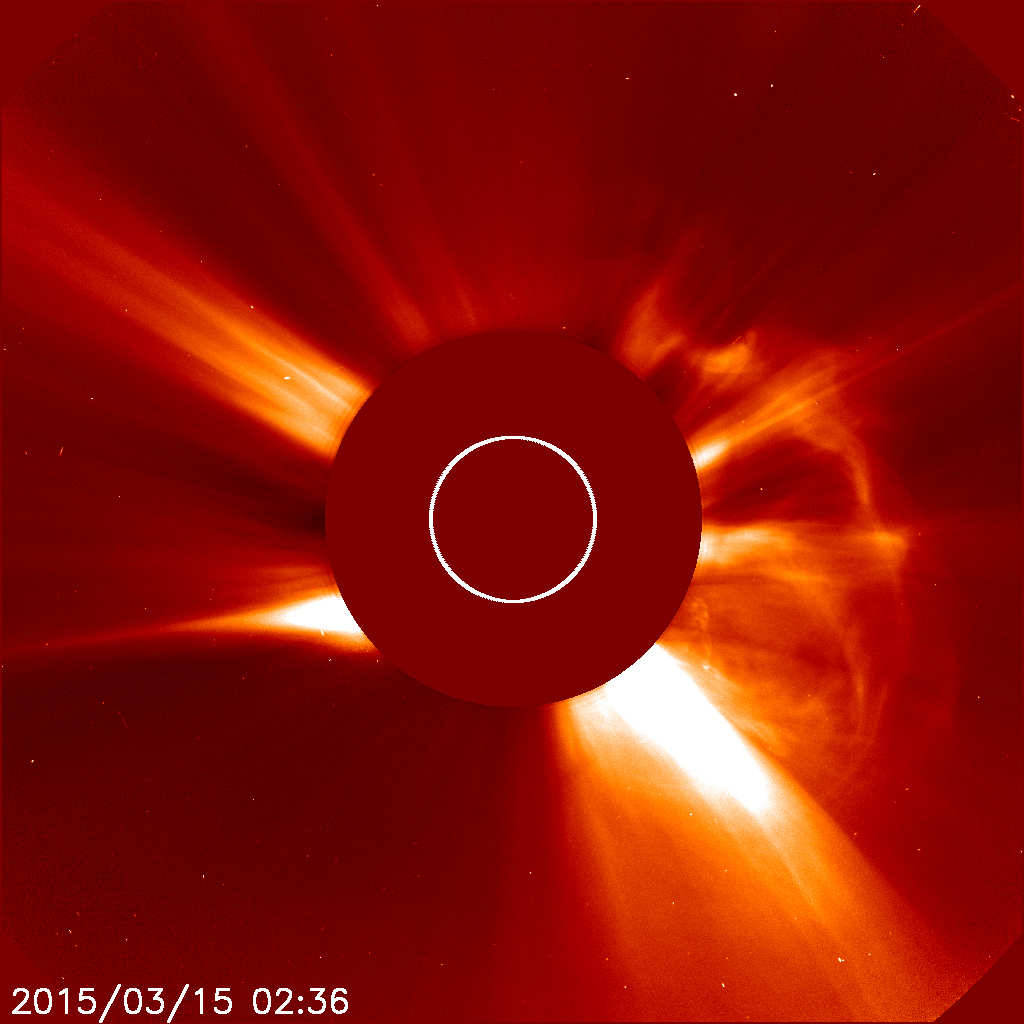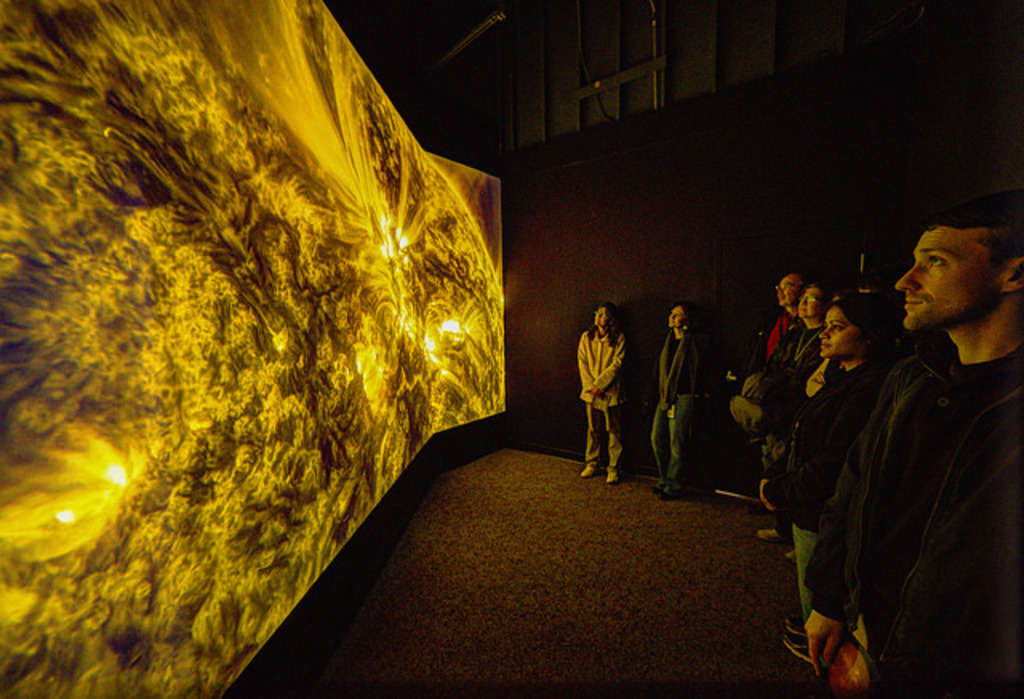Sounds of the Sun

An illustration of a sunspot inspired by imagery from NASA's Solar Dynamics Observatory (SDO).
Data from ESA and NASA’s Solar and Heliospheric Observatory (SOHO) has captured the dynamic movement of the Sun’s atmosphere for over 20 years. Today, we can hear the Sun’s movement — all of its waves, loops and eruptions — with our own ears.
This sound helps scientists study what can’t be observed with the naked eye.
“Waves are traveling and bouncing around inside the Sun, and if your eyes were sensitive enough they could actually see this,” said Alex Young, associate director for science in the Heliophysics Science Division at NASA’s Goddard Space Flight Center in Greenbelt, Maryland.
Data from SOHO, sonified by the Stanford Experimental Physics Lab, captures the Sun’s natural vibrations and provides scientists with a concrete representation of its dynamic movements.
“We don’t have straightforward ways to look inside the Sun. We don’t have a microscope to zoom inside the Sun,” Young said. “So using a star or the Sun’s vibrations allows us to see inside of it.”
These vibrations allow scientists to study a range of complex motions inside the Sun, from solar flares to coronal mass ejections.
“We can see huge rivers of solar material flowing around. We are finally starting to understand the layers of the Sun and the complexity,” Young said. “That simple sound is giving us a probe inside of a star. I think that’s a pretty cool thing.”
The sounds of the Sun are on display at the NASA Goddard Visitor Center in Greenbelt, Maryland. An immersive art installation, called Solarium, uses vivid imagery and sonification to transport listeners to the heart of our solar system.
This is a social media video that uses the audio and waveform from the Sounds of the Sun story. The illustration of a sunspot is inspired by imagery from NASA's Solar Dynamics Observatory (SDO).
Watch this video on the NASA Goddard YouTube channel.
For More Information
See NASA.gov
Credits
Please give credit for this item to:
NASA's Goddard Space Flight Center
-
Producers
- Micheala Sosby (NASA/GSFC)
- Katie Atkinson (GSFC Interns)
-
Narrator
- C. Alex Young (NASA/GSFC)
-
Technical support
- Aaron E. Lepsch (ADNET Systems, Inc.)
Release date
This page was originally published on Wednesday, July 25, 2018.
This page was last updated on Wednesday, May 3, 2023 at 1:46 PM EDT.
![Trailer without text introduction. Music credit: Luminous Skies [Underscore] by Andrew Prahlow from www.killertracks.comComplete transcript available.Watch this video on the NASA Goddard YouTube channel.](/vis/a010000/a012900/a012911/1080trailer_updated_animation2_youtube_1080.02350_print.jpg)

